This blog was written by Kristina Smith, Corporate Communication Specialist at Elevate Communication.
Look at the tool bag of anyone working in corporate communication and you will find a raft of skills in the engagement space—a heap of ‘engagement coins’, if you will, weighing down their tool bag and ready to be transacted in the process of implementing strategic business plans. Community consultation and stakeholder engagement are 2 sides of the same coin—banked by businesses to withdraw as contingency during challenging times or when crisis hits; and used to invest in stakeholder and community partnerships to grow and improve projects throughout their lifespan.
Community consultation and stakeholder engagement—2 sides of a coin
The terms community consultation and stakeholder engagement can seem, to those on the periphery of the corporate communication space, to be interchangeable terms. They are similar, and yet quite different.
Community v stakeholder
Are you talking about the community or stakeholders? Can your local community be a stakeholder? Can your stakeholders encompass your community? Are we talking semantics or are there tangible differences?
It all comes down to influence. A community segment might be a stakeholder if that segment has direct influence over the outcome of the project.
Stakeholders are usually considered to have greater influence on a project’s outcome than the community—although community may have considerable interest in the project. Stakeholders have a greater ‘stake’ in the project—they have business interests or are ‘invested’ in a corporate sense.
Because of this, stakeholders can be erroneously classified as having greater gravitas than community, but that classification is a fool’s mistake. Both stakeholders and community are key to a positive outcome with sectors of the community easily transitioning into the status of a stakeholder during a project’s life cycle. Think about public consultation phases for major construction works and how critical the community is during that time, with government approvers looking at public sentiment during the developmental approval stage. In that respect, both community and stakeholders can derail a project, both can enhance a project, and both need to be considered during the planning and implementation phases of a project.
Consultation v engagement
Consultation is generally considered to be a planning tool and occurs at the start of a project to benchmark viewpoints and help set the parameters for the ongoing engagement. It is considered a form of public participation (consider the International Association of Public Participation (IAP2) framework) like engagement but is not considered to be as ‘involved’ or as collaborative as engagement. On the IAP2 spectrum the activities that are from least to most impact on the decision include: inform, consult, involve, collaborate, empower. Consultation is often considered to be one-way information and usually involves information dissemination as the main tactic. Engagement, which on the IAP2 spectrum could be considered as constituting the involve, collaborate, and empower elements, is an ongoing, 2-way flow of information that creates collaboration and a culture of shared ownership of a project’s goal.
Why is stakeholder engagement important?
Businesses are not silos—they are part of an ecosystem involving their community where they are located, their customers, their business partners, the regulators, and their employees (as individuals, not as a collective group). Businesses are more like sieves—multiple conversations with different groups of people running concurrently; a 2-way flow of information.
Stakeholders can become proponents of your activity—‘knights leading your cause’—you need their buy-in to smooth your path; you need them to lend their voice to your cause or to action something on your behalf. Conversely, if you don’t engage stakeholders then they can become antagonists to your project—being apathetic to your project or making waves; withdrawing funding or board support; pulling regulatory approvals or requiring extra effort and information before a project proceeds.
How can you get stakeholder engagement right?
Effective stakeholder engagement can follow various methodologies but should all be based on the same premise: providing pertinent information tailored to the needs of the stakeholder taking into account their ‘persona’ and their motivations, pain points, and challenges and delivered in a format the stakeholder regularly and comfortably uses in a manner that resonates with the language and requirements specific to the stakeholders’ needs. Key to this is knowing your stakeholders—really knowing them.
Stakeholder mapping
The first step in engaging your stakeholders is knowing them. You can’t effectively ‘talk’ with a group of people you know nothing about; instead, you need to map your stakeholders. You need to know them, understand them, and tailor your engagement to their needs. You should plot them on an interest and influence matrix to visually situate them. During this process you should find out:
- Why they are important to you / what is the purpose of the engagement
- What their influence and interest is to your project
- What their current viewpoint is
- Whether you intend to inform that viewpoint, or alter that viewpoint to a different viewpoint and, realistically, how much of a shift is likely (incremental shifts should never be discounted)
- What aspects of the project will particularly resonate with them / what are the key concerns
- How they like to receive information
- How often they like to be communicated with
- What does each word mean for each stakeholder (rhetorical analysis approach considers the different meanings the same word holds with various stakeholders)
- How senior they are and therefore who, within your business, needs to be doing the communicating
- What assumptions are you making about your stakeholders (and more importantly, how can you avoid relying on the assumptions and work with real data, instead).
Engagement considerations
Then, you need to consider how you will deal with feedback. If we recognise the sieve-like nature of businesses and the need for 2-way information streams, then equal weighting needs to be placed on the feedback being received and how that is handled. Using all of your resources to carefully craft and deliver information will be a waste if stakeholder feedback is handled poorly, and if it isn’t circled back in an iterative process. You should plan on how to engage but also how to receive, consider, and enact on the results of the engagement, the feedback. This engagement loop should also include an evaluation phase to consider how your information is being received by your various stakeholder groups and if the tailoring is as effective as you’d like.
Key to all of this, is to embed stakeholder engagement into your strategy from the project’s inception—including it in the foundation rather than having it as an add-on. When embedding it is important to consider legitimacy gap theory and ensure the expectations of your stakeholders are met during the engagement process.
Finally, it is important to realise that stakeholder engagement should always be bespoke—no cookie-cutter short-cuts! It is important to work within the greys and recognise the subtleties and shifts in perception as the project evolves.
If you would like to talk about your stakeholder engagement and community consultation plans, please get in touch with Elevate’s Managing Director, Mel Deacon, on mel@elevatecom.com.au for more information.







